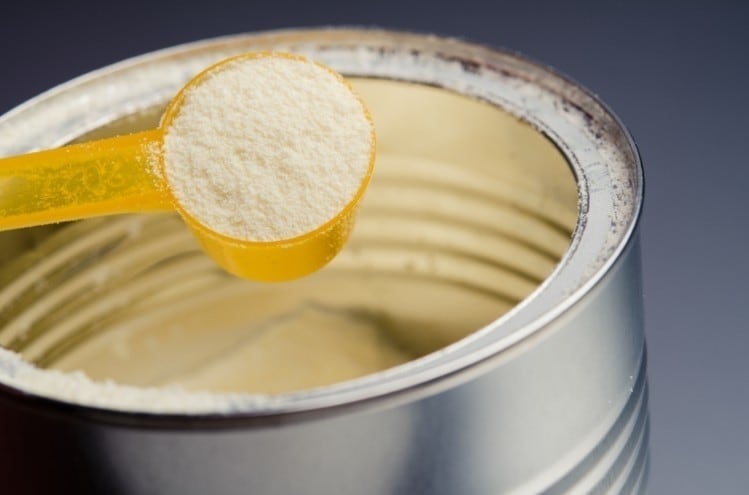The review stated that presently, the national standards for formula for six- to 12-month-old infants did not "correspond to current scientific knowledge and data".
Conducted together with the China Centre for Disease Control's (CDC) National Institute of Nutrition and Health, Sun Yat-Sen University, Peking University and Chinese Nutrition Society, the aim of the review was to determine the best formula composition for infants aged six months to one year old, as assessed and recommended by experts.
More or less?
The researchers took into account multiple factors when drawing up formula composition recommendations, such as nutrient intake, nutrient content of Chinese mothers' breast milk, and the latest adequate intake and tolerable upper intake levels.
They also referred to recommendations found in the Codex Alimentarius and those of other countries, and stated that most of the compositional requirements of China's current infant formula standards should be modified.
These recommendations included:
- lowering the maximum energy density from 85kcal per 100ml to between 60kcal and 75kcal per 100ml
- reducing the protein content in milk-based formula from 2.9g to 5g per 100kcal to 1.8g to 3.5g per 100kcal
- raising the minimum lipid content from 2.9g per 100kcal to 3.5g per 100kcal
- including the maximum amount of vitamins and minerals (such as vitamins B6, B12, C, E, and K, thiamine, riboflavin, niacin, folic acid, pantothenic acid, biotin, magnesium, calcium, phosphorus and iodine
- altering the content of optional components, such as DHA, ARA and taurine
The researchers stated that these nutrient standard modifications were "expected to enhance feeding practices and further guarantee the health of six- to 12-month-old infants in China".
This is especially important as parents in China are among the world's top spenders on infant formula products, and the Chinese government "strongly advocates partial breastfeeding during the second half of infancy, up to two years of age or beyond, along with the provision of safe and nutritionally adequate complementary foods".
In the case of insufficient or unavailable breastmilk, parents' and children's reliance on formula products becomes even greater. The researchers said that formula containing lower protein, fewer minerals and modified nutrients that mimic breast milk composition could better meet the nutritional requirements of infants aged six months to one year old.
For instance, the energy density in formula tends to be significantly higher than in human breast milk. Infants fed such formula could gain excessive weight that could lead to obesity and related diseases later in life.
Studies have found that on average, the energy density in Chinese women's breast milk is 65kcal per 100ml, hence the recommendation that the energy density in formula for six- to 12-month-old infants be lowered to between 60kcal and 75kcal per 100ml.
At the same time, while protein is vital for healthy growth and development, the minimum and maximum levels of protein in formula are 2.9g and 5g per 100kcal respectively, much higher than the average of 1.4g to 1.6g per 100kcal in the breast milk of Chinese women.
As with energy density, excessive protein intake during the first year of life could result in excessive weight gain and therefore, raise an infant's risk of obesity and associated diseases in adulthood.
Lipid levels, on the other hand, should be increased in formula, as they are not only key nutrients for brain, nerve tissue, and retina development in infants, but also likely to lower the risk of infants becoming overweight.
According to a study referenced by the researchers, mothers with higher fat content in their breast milk were more likely to have children who were of a healthy weight and body fat level, as indicated by their lower BMI and skin fold adiposity.
The researchers wrote: "The average lipid content in mature Chinese women's breast milk is 3.1g/100ml to 3.6 g/100ml, representing approximately 43% to 49% of total energy. The Chinese DRI (daily recommended intake) recommends that lipid energy should account for 40% of total energy intake in older infants.
According to the current standards, "lipid content is set at 2.9g/100kcal 5.9 g/100 kcal. Studies on dietary intake have reported that the median lipid energy values in older infants from various parts of China is 22.1% to 31.7% of total energy, which is lower than that recommended by the Chinese DRI".
They added that lipid levels in formula for infants aged six months to one year should therefore be increased, especially since decreased protein content was now the new standard.
The newly proposed lipid content of 3.5g to 6g per 100kcal would ensure that lipids provided 32% to 54% of energy, closer to the lipid energy ratio in human breast milk.
Of science and standards
The researchers stated that they had used recent scientific data — most of which came from China — to inform their recommendations on the nutritional composition requirements of follow-up formula for infants aged six to 12 months, with "the trend of the modification following the newest development of international standards".
In conclusion, they wrote: "As the compositional standards proposed in this paper are based on current understanding of the available evidence, future scientific data may render it necessary to update them.
"Modifications of the formula standard or addition of other ingredients should be evaluated with regard to safety and possible benefits, on the basis of scientific data that preferably include clinical trials."
Source: Asia Pacific Journal of Clinical Nutrition
https://doi.org/10.6133/apjcn.201906_28(2).0017
"Composition requirements of follow-up formula for 6–12-month-old infants: recommendations of a Chinese expert group"
Authors: Junhua Han, et al.


